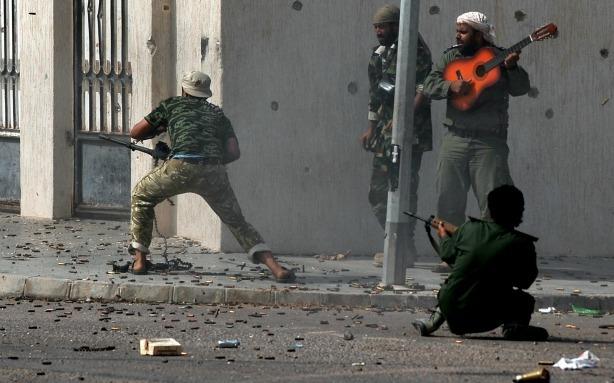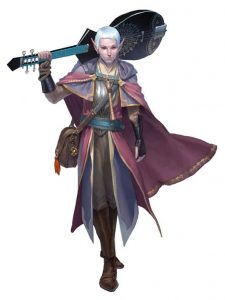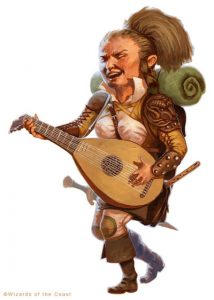Everything-a-lore-bard-can-do-with-find-steed-no-cheese
Today in Thoughts and Things, we have the optimization of the D&D 5th edition Bard Class that has been archived from the Wizards of the Coast D&D Community boards. It has since sadly been deleted, and we can present it in an easier to read format, that has been edited for your enjoyment. This is in the same vein as the Barbarian & Ranger Character Optimization articles that we have previously hosted. I like to use these when I am contemplating putting together a character in a new class to understand how they work.
A Party without Music is Lame

Bard Inspiration – Companions now get a +d12 to Hit
Why be a bard? Bard's main shtick is support. Mostly offensive support by disabling enemies and letting your allies run rampant over them, but also by adding floating bonuses via your inspiration. You have all the key healing spells as well, and can pick up any spell needed to fill in gaps in the party, making them rather versatile.
Color Code
Gold : Something you pretty much always take.
Sky blue : Grade A, and usually the most optimal choice.
Blue : Grade B, solid, if not quite optimal.
Black : Grade C, it passes, but don't expect much wow from it.
Purple : Situational, most of the time you should pass on this, but there are corner cases that can really make this good.
Red : Grade F, avoid. At best you just wasted your choice, but it might actually hurt you.
Ability Scores
Charisma : You main stat. You could potentially play a low Charisma Valor Bard, but you're probably better off as an Eldritch Knight or Cleric for that concept. This also will boost your inspiration dice, so it's hard to pass up.
Dexterity : Likely your secondary stat. Getting your disabling spell off first is great. Valor is likely to use this for an attack stat, and Lore needs it for AC as well.
Constitution: Good for anyone, possibly more for your concentration checks than health. Though Lore Bards tend to stay in back.
Strength : Probably a dump stat. Though Valor Bards can make this work with expertise athletics. Grapple someone in a cloud of daggers, Hypnotize everyone then drag them around to compromising positions, Or make someone fall asleep, and get a free critical hit with a greatsword.
Wisdom : Perception is important, and Wisdom saves can be very nasty (as you can prove yourself). Not a dump stat, but not a priority either.
Intelligence : You're most likely dump stat. Though it's nice to know stuff.
Races
 Human Variant : Starting with Alertness, Warcaster (Valor), or Moderately Armored (Lore) to make yourself strong at low levels. Wait for a bigger proficiency bonus for resilience, and grapplers need shield proficiency before shield master. You don't get darkvision, which can hurt, notably the stealthy bards.
Human Variant : Starting with Alertness, Warcaster (Valor), or Moderately Armored (Lore) to make yourself strong at low levels. Wait for a bigger proficiency bonus for resilience, and grapplers need shield proficiency before shield master. You don't get darkvision, which can hurt, notably the stealthy bards.
Half-Elf : Darkvision, +Cha, and +1 to 2 others, extra skills, and protection from some your own spells.
Tiefling / Aasimar : Darkvision, +Cha, and a few extra spells per day.
Drow Elf : Darkvision, +Cha, and a few extra spells per day. The sunlight sensitivity doesn't hurt the majority of spells. Still ok for valor bards who don't rely on weapons too much.
Dragonborn : Both Str and Cha make this good for valor bards. Breath attack helps make up for a weakness on the bard list.
Human : Bonus points help you be even more of a jack-of-all trades.
Lightfoot Halfling : For stealthy valor bards. Lucky doesn't help your spells though.
Goliath : Adds some toughness, and stones endurance can help keep concentration spells going.
Half-Orc: For valor bards. Relentless endurance can let you be more risky.
Dwarf: Medium armor is good for lore bards. And more HP is nice for everyone.
Gnome: Advantage spells is solid but that's all you get. Better if your abusing magic jar.
Aarakocra : Flying high in combat is generally not advised, but the 50′ speed can help you safe as a backline attacker, allowing you to hit and run (or hypnotic pattern and run). Note that valor can still use a shield while flying. Also good for grapple builds. Either way, make sure to take feather fall.
Stout Halflilng : Not much here.
Elf (wood, high) : Not much here.
Genasi : Still not much.
Class features
 Bardic Inspiration : Who want's a bonus! While you need to pre-use this, its versatility, being able to use it after a roll, and 10 minute window, there's a pretty low chance of it being wasted. Note it works on initiative.
Bardic Inspiration : Who want's a bonus! While you need to pre-use this, its versatility, being able to use it after a roll, and 10 minute window, there's a pretty low chance of it being wasted. Note it works on initiative.
Font of Inspiration : This is like getting bardic inspiration all over again. Make sure to use them.
Jack-Of-All Trades : You are moderately good at everything. Note this works on initiative, dispel magic, counter spell, and several other things as well.
Expertise : You're really good at something. Stealth, perception, and athletics are top choices. But what you want really depends on your build and campaign.
Magic Secrets : This really opens up the class to do pretty much anything. Note that these count against your known spells, so it's not quite as great as it might first seem. There's a section below for choice spells to take.
Spellcasting : Bards are casters. Most of their power comes from here with a large selection of save-or-suck spells, as well as some healing spells. They get a moderate amount of spells (about 2-3 per level), but can only swap when they level. Spells are rated below.
Song of Rest : A nice bonus at low levels, but doesn't scale well. Still, free HP.
Counter Charm : Pretty niche, you could easily forget you have this. Though it can come in handy on occasion.
Superior Inspiration : Possibly the worst capstone in the game. More bardic inspiration is good, but the condition attached means you'll rarely see it happen. So multi-class caster, you can keep your slots.
Sub-Classes
Valor
The big feature here is medium armor, which can net you +3 to +5 AC. There are several ways to go with weapons.
- Ignore them (14 dex, 20 Cha) and just enjoy the AC boost as a caster.
- Focus on them (20 Str/Dex, weapon feats, 16 Cha) and take non-save spells, like heroism, cloud of daggers, polymorph, animate objects, and force cage. As well as snagging smites or swift quiver. A few save spells can still work.
- Pick up Shillelagh at 10 allowing you to use Cha to attack. For a solid gish option.
- Phyiscal control with Expertise in Athletics + Shield Master + enlarge with your magic secrets, and again, non-save spells.
- Valor 5 / Warlock or sorcerer is a good combo, adding armor and inspiration and some spells to the other class.
- Valor 6/ Rogue also works, with 2 chances to land sneak attack, and plenty of skills and utility.
Proficiencies : As mentioned, +4 or +5 AC is big. Martial weapons are nice too.
Combat Inspiration adds a few more ways to use inspiration.
Damage is generally the worse option, though still it's nice to have, especially on a critical hits, or if you just need a little more to finish someone off.
6: Multi-attack: Not too impressive unless you've invested in weapon boosting stuff. You can ignore this feature and boost just stick with cantrips. Though it is nice for grapple + prone for extra control.
14: Battle Magic : Extra damage is good. Even if you only have 14 Dex as a caster it's worth while to hold a hand crossbow. Note you can attack before or after you cast, but cannot grapple+cloud of daggers.
Lore
The big feature here is Cutting words, which makes it much easier to use inspiration dice. Magic secrets helps round you out as a spell caster, but it doesn't give more slots or more dice (you do get 2 extra known spells), so it's not that big of a boost. In a game where combat is minimal, lore bards are arguably the best class in the game. They fit into parties who have a good front line that can protect and defense (fighters, barbarians), and could use support and skills. Or you can simply multiclass cleric for AC.
Lore Bards multiclass better than Valor Bards because there is less overlap (i.e. armor). Cleric 1 is tempting, with it's armor and guidance. Lore bard are best when you have a good front line and damage (barbarian, fighter, paladin), and need more support and utility.
Proficiencies : You already have the ones you want, and jack of all trades give you half of this anyways.
Cutting Words : The fact that you don't need to pre-use it makes it a good bit harder to waste, though you still want to hand them out to your allies for any saving throw situations.
- The to-hit penalty is certainly useful.
- Ability checks is pretty tame at, since you rarely see an enemy roll. However, it works on initiative, and cutting the solo dragons initiative is the same as boosting your entire parties. It can also let you burn 2 dice on the same roll, such as boosting an assassins initiative while cutting the dragons, or double up on a grapple check, though that's pricey.
- Reducing damage isn't normally worth the die, but if you do it to an AoE, like fireball, that can add up. It also helps with concentration checks.
6: Additional Magic Secrets: 2 extra known spells. Most spells from other classes don't scale as well as bards, or compete with concentration (bless), so pick a better attack cantrip (eldrich blast). Better if you can retrain it.
14: Peerless Skill : You can now boost your own initiative, counterspell / dispell, and skills, but your dice are really getting stretched. This does combo with expertise, to allow you to get extrodinary skill checks. And if you take something like glibness and you can bluff a god (15 glibness + 5 cha + 6 proficiency + 6 expertise + 6.5 peerless skill + 6.5 cutting words insight penalty = 45). But you'll probably never face a DC that's higher than 30.
Picking your Spells
Everything-a-lore-bard-can-do-with-find-steed-no-cheese
Source: https://www.tribality.com/2016/02/01/dd-5e-character-optimization-bard/